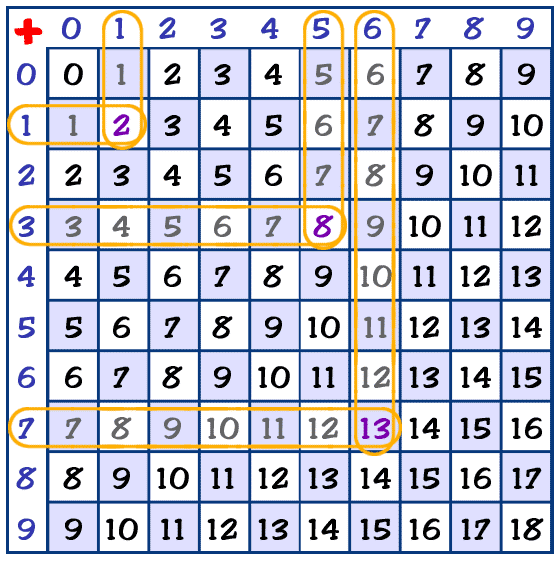What is Addition?
Addition puts values together. It's about bringing things from one area and combining them with things from another area. It could be as simple as adding two (2) books to a stack of four (4) books. You wind up with a stack of six (6) books. It could also be as complex as working with the masses of planets to determine the forces of gravity at different points in the solar system. Addition is everywhere.Terms that tell you that you need to use addition in the problem:
• Put them together.
• Add them up.
• Combine them.
• Group them.
• This plus that.
• This and that.
• More.
Here's a simple addition word problem you might see...
Bobby has six toy cars and his mom gives him three more for his birthday. How many does he have? (The answer is nine cars.)
Setting Up the Problem
Addition uses the "+" sign. It's called a plus sign. It tells you to add the value before the sign to the value after the sign. The two values in an addition problem are called "addends" and the answer is called the "sum." You will also see two different layouts of addition problems. There might be a horizontal layout where all of the addends are in a row. We use that horizontal style on these pages because they are easier to type. The other format is a vertical or stacked layout. That format places the addends on top of each other. When you start adding larger numbers (or more than two numbers), the stacked layout will make your life easier.Example:
5 + 2 = 7
Five (5) and two (2) are the addends.
Seven (7) is the sum of the problem.
Adding Single-Digit Numbers
Now you have to add values. When you first learned about whole numbers, you learned that each number represents a value. "1" represents a single object. "2" represents two objects. Addition is the next step in working with those numbers. Now you need to combine the values.Examples:
1 + 1 = 2 (One object combined with one object gives you two objects.)
5 + 3 = 8 (Five objects combined with three objects gives you eight objects.)
6 + 7 = 13 (Six objects combined with seven objects gives you thirteen objects.)

That's about it. If you start with single-digit numbers, you can use your fingers to do the counting. To become better at addition, you only need practice. Both the concept and the process are very easy to understand. Take some of these, add them to these, and tell the teacher how many you have in total. The rest of the sections will help challenge you with different ways to add and different types of numbers you can add together.
Useful Reference Materials
Wikipedia:https://en.wikipedia.org/wiki/Arithmetic
Encyclopædia Britannica:
http://www.britannica.com/topic/arithmetic
Encyclopedia.com:
http://www.encyclopedia.com/topic/arithmetic.aspx





